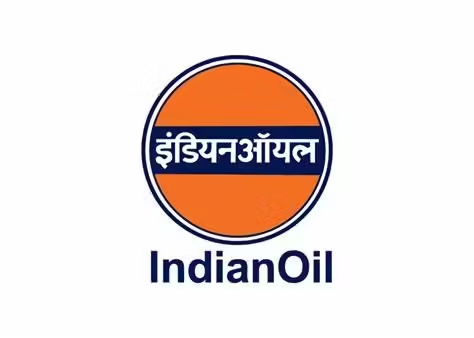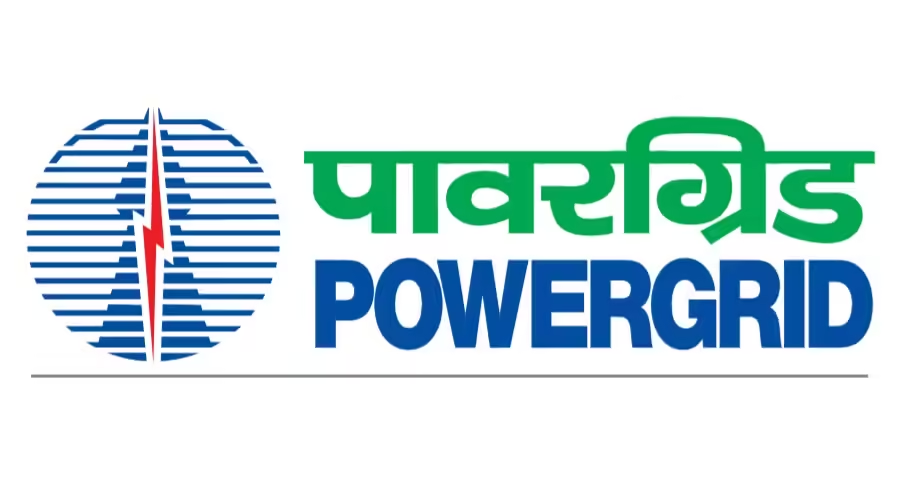Public Sector Undertakings (PSUs) have long been a cornerstone of the Indian economy, playing a significant role in sectors ranging from energy to banking. Despite various challenges, PSU stocks have remained a popular choice for investors seeking stable returns and long-term growth.
Here’s a look at some of the top PSU stocks in India to consider for 2024.
1. Oil and Natural Gas Corporation (ONGC)

Introduction:
Oil and Natural Gas Corporation (ONGC) is a leading Indian multinational oil and gas company headquartered in New Delhi. Established in 1956, ONGC is involved in the exploration, development, and production of crude oil and natural gas. It also engages in refining and marketing petroleum products and has ventures in renewable energy sources like wind and solar power.
Market Capitalization:
As of today, ONGC’s market capitalization stands at approximately ₹3.90 trillion.
Last Three Years’ Return:
Over the past three years, ONGC has delivered a remarkable return of approximately 168.84%. This performance significantly outpaces the broader market indices, reflecting the company’s strong operational and financial growth.
Additional Information:
- Revenue and Profit: For the fiscal year ending March 2024, ONGC reported a revenue of ₹1.67 trillion and a net income of ₹101.07 billion.
- Dividend Yield: ONGC is known for its attractive dividend yield, which currently stands at 4.26%.
- Sustainability Initiatives: ONGC is also investing in renewable energy projects, including wind and solar power, to diversify its energy portfolio and contribute to sustainable development.
2. NTPC Limited

Introduction:
NTPC Limited, established in 1975, is India’s largest energy conglomerate. Headquartered in New Delhi, NTPC is primarily involved in the generation and sale of electricity to state power utilities. The company operates through various segments, including coal, gas, hydro, solar, nuclear, wind, and other renewable energy sources. NTPC also engages in energy trading, oil and gas exploration, and coal mining activities.
Market Capitalization:
As of today, NTPC’s market capitalization is approximately ₹4.06 trillion.
Last Three Years’ Return:
Over the past three years, NTPC has delivered an impressive return of approximately 230.66%. This strong performance highlights the company’s robust growth and strategic initiatives in the energy sector.
Additional Information:
- Revenue and Profit: For the fiscal year ending March 2024, NTPC reported a revenue of ₹1.83 trillion and a net profit of ₹19,384 crore.
- Dividend Yield: NTPC offers a dividend yield of 3.28%.
- Sustainability Initiatives: NTPC is actively investing in green energy projects, including solar and wind power, to enhance its renewable energy portfolio and support sustainable development.
3. Indian Oil Corporation (IOC)

Introduction:
Indian Oil Corporation (IOC) is India’s largest commercial enterprise, established in 1959 and headquartered in New Delhi. The company is involved in the refining, transportation, and marketing of petroleum products. It also engages in the exploration and production of crude oil and natural gas, as well as the production of petrochemicals. IOC plays a crucial role in meeting India’s energy demands and has a significant presence in the global energy market.
Market Capitalization:
As of today, IOC’s market capitalization is approximately ₹2.50 trillion.
Last Three Years’ Return:
Over the past three years, IOC has delivered a return of approximately 157.81%. This performance reflects the company’s resilience and strategic initiatives in the energy sector.
Additional Information:
- Revenue and Profit: For the fiscal year ending March 2024, IOC reported a revenue of ₹1.94 trillion and a net profit of ₹35.28 billion.
- Dividend Yield: IOC offers a dividend yield of 6.77%.
- Sustainability Initiatives: IOC is actively investing in renewable energy projects, including solar and wind power, to diversify its energy portfolio and support sustainable development.
4. Power Grid Corporation of India Limited (POWERGRID)

Introduction:
Power Grid Corporation of India Limited (POWERGRID) is a state-owned electric utility company established in 1989 and headquartered in Gurugram, India. The company is primarily engaged in the transmission of electricity across India. POWERGRID operates a vast network of transmission lines and substations, ensuring reliable and efficient power supply. It also provides consultancy services in the power sector and operates a telecom business under the brand name POWERTEL.
Market Capitalization:
As of today, POWERGRID’s market capitalization is approximately ₹3.24 trillion.
Last Three Years’ Return:
Over the past three years, POWERGRID has delivered an impressive return of approximately 221.98%. This strong performance underscores the company’s robust growth and strategic initiatives in the power transmission sector.
Additional Information:
- Revenue and Profit: For the fiscal year ending March 2024, POWERGRID reported a revenue of ₹1.10 trillion and a net profit of ₹37.24 billion.
- Dividend Yield: POWERGRID offers a dividend yield of 3.22%.
- Sustainability Initiatives: POWERGRID is actively investing in green energy projects and enhancing its transmission infrastructure to support the integration of renewable energy sources.
5. Bharat Petroleum Corporation Limited (BPCL)
Introduction:
Bharat Petroleum Corporation Limited (BPCL) is a leading public sector undertaking (PSU) in India, established in 1952 and headquartered in Mumbai. BPCL is engaged in the refining, transportation, and marketing of petroleum products. The company operates through two main segments: Downstream Petroleum and Exploration and Production of Hydrocarbons. BPCL also has a significant presence in the natural gas business and is involved in the production of petrochemicals.
Market Capitalization:
As of today, BPCL’s market capitalization is approximately ₹1.48 trillion.
Last Three Years’ Return:
Over the past three years, BPCL has delivered a return of approximately 34.8%. This performance reflects the company’s efforts to navigate market challenges and capitalize on growth opportunities in the energy sector.
Additional Information:
- Revenue and Profit: For the fiscal year ending March 2024, BPCL reported a revenue of ₹1.94 trillion and a net profit of ₹26.86 billion.
- Dividend Yield: BPCL offers a dividend yield of 6.27%.
- Sustainability Initiatives: BPCL is actively investing in renewable energy projects, including solar and wind power, to diversify its energy portfolio and support sustainable development.
6. Steel Authority of India Limited (SAIL)
Introduction:
Steel Authority of India Limited (SAIL) is a leading steel-making company in India, established in 1954 and headquartered in New Delhi. It is a fully integrated iron and steel maker, producing both basic and special steels for domestic construction, engineering, power, railway, automotive, and defense industries, as well as for export markets. SAIL operates and owns five integrated steel plants and three special steel plants across India.
Market Capitalization:
As of today, SAIL’s market capitalization is approximately ₹564.31 billion.
Last Three Years’ Return:
Over the past three years, SAIL has delivered a return of approximately 16.97%. This performance reflects the company’s efforts to navigate market challenges and capitalize on growth opportunities in the steel sector.
Additional Information:
- Revenue and Profit: For the fiscal year ending March 2024, SAIL reported a revenue of ₹1.06 trillion and a net profit of ₹30.67 billion.
- Dividend Yield: SAIL offers a dividend yield of 0.92%.
- Sustainability Initiatives: SAIL is actively investing in green technologies and modernizing its facilities to enhance efficiency and reduce environmental impact.
7. GAIL (India) Limited
Introduction:
GAIL (India) Limited, formerly known as Gas Authority of India Limited, is a state-owned energy corporation established in 1984 and headquartered in New Delhi. GAIL is India’s leading natural gas company with diversified interests across the natural gas value chain, including trading, transmission, LPG production and transmission, LNG re-gasification, petrochemicals, city gas distribution, and exploration and production. The company also has a significant presence in renewable energy sectors such as solar and wind power.
Market Capitalization:
As of today, GAIL’s market capitalization is approximately ₹1.55 trillion.
Last Three Years’ Return:
Over the past three years, GAIL has delivered a robust return of approximately 190.64%. This performance highlights the company’s strong growth and strategic initiatives in the energy sector.
Additional Information:
- Revenue and Profit: For the fiscal year ending March 2024, GAIL reported a revenue of ₹1.34 trillion and a net profit of ₹99.03 billion.
- Dividend Yield: GAIL offers a dividend yield of 2.45%.
- Sustainability Initiatives: GAIL is actively investing in green energy projects, including hydrogen blending, solar, and wind power, to diversify its energy portfolio and support sustainable development.
8. Container Corporation of India Limited (CONCOR)
Introduction:
Container Corporation of India Limited (CONCOR) is a leading logistics and transportation company in India, established in 1988 and headquartered in New Delhi. The company primarily provides inland transportation of containers by rail and road. CONCOR also manages ports, air cargo complexes, and cold chains, offering a wide range of logistics services, including warehousing, container parking, and repair facilities.
Market Capitalization:
As of today, CONCOR’s market capitalization is approximately ₹1.02 trillion.
Last Three Years’ Return:
Over the past three years, CONCOR has delivered a return of approximately 45.67%. This performance reflects the company’s strategic initiatives and growth in the logistics sector.
Additional Information:
- Revenue and Profit: For the fiscal year ending March 2024, CONCOR reported a revenue of ₹8.67 billion and a net profit of ₹2.34 billion.
- Dividend Yield: CONCOR offers a dividend yield of 1.85%.
- Sustainability Initiatives: CONCOR is actively investing in green logistics solutions, including the use of electric vehicles and renewable energy sources, to enhance sustainability and reduce its carbon footprint.
9. Hindustan Petroleum Corporation Limited (HPCL)
Introduction:
Hindustan Petroleum Corporation Limited (HPCL) is a major Indian public sector undertaking in the petroleum and natural gas industry. Established in 1952 and headquartered in Mumbai, HPCL is a subsidiary of Oil and Natural Gas Corporation (ONGC). The company is involved in refining, marketing, and distribution of petroleum products, as well as the exploration and production of hydrocarbons. HPCL operates a vast network of retail outlets, LPG distributorships, and EV charging stations across India.
Market Capitalization:
As of today, HPCL’s market capitalization is approximately ₹827.19 billion.
Last Three Years’ Return:
Over the past three years, HPCL has delivered a return of approximately 123.58%. This performance reflects the company’s resilience and strategic initiatives in the energy sector.
Additional Information:
- Revenue and Profit: For the fiscal year ending March 2024, HPCL reported a revenue of ₹4.63 trillion and a net profit of ₹16.01 billion.
- Dividend Yield: HPCL offers a dividend yield of 5.44%.
- Sustainability Initiatives: HPCL is actively investing in renewable energy projects, including wind and solar power, to diversify its energy portfolio and support sustainable development.
10. Coal India Limited (CIL)
Introduction:
Coal India Limited (CIL) is an Indian central public sector undertaking under the ownership of the Ministry of Coal, Government of India. Established in 1975 and headquartered in Kolkata, CIL is the largest coal-producing company in the world. It operates through its subsidiaries in 84 mining areas across eight states in India, producing a wide range of coal products for various industries, including power generation, steel, cement, and more.
Market Capitalization:
As of today, CIL’s market capitalization is approximately ₹3.12 trillion.
Last Three Years’ Return:
Over the past three years, CIL has delivered a return of approximately 266.02%. This impressive performance highlights the company’s strong market position and operational efficiency.
Additional Information:
- Revenue and Profit: For the fiscal year ending March 2024, CIL reported a revenue of ₹1.50 trillion and a net profit of ₹37.37 billion.
- Dividend Yield: CIL offers a dividend yield of 5.11%.
- Sustainability Initiatives: CIL is actively investing in sustainable mining practices and technologies to reduce its environmental impact and enhance operational efficiency.
11. Indian Railway Finance Corporation (IRFC)
Introduction:
Indian Railway Finance Corporation (IRFC) is the dedicated financing arm of the Indian Railways, established in 1986 and headquartered in New Delhi. The company is responsible for raising financial resources for the expansion and operation of the Indian Railways through capital markets and other borrowings. IRFC is a Schedule ‘A’ Public Sector Enterprise under the administrative control of the Ministry of Railways, Government of India.
Market Capitalization:
As of today, IRFC’s market capitalization is approximately ₹2.34 trillion.
Last Three Years’ Return:
Over the past three years, IRFC has delivered a return of approximately 27.59%. This performance reflects the company’s strategic initiatives and growth in the financial sector.
Additional Information:
- Revenue and Profit: For the fiscal year ending March 2024, IRFC reported a revenue of ₹26,644 crore and a net profit of ₹6,452 crore.
- Dividend Yield: IRFC offers a dividend yield of 0.85%.
- Sustainability Initiatives: IRFC is actively investing in sustainable financing practices to support the development of green and efficient railway infrastructure.





